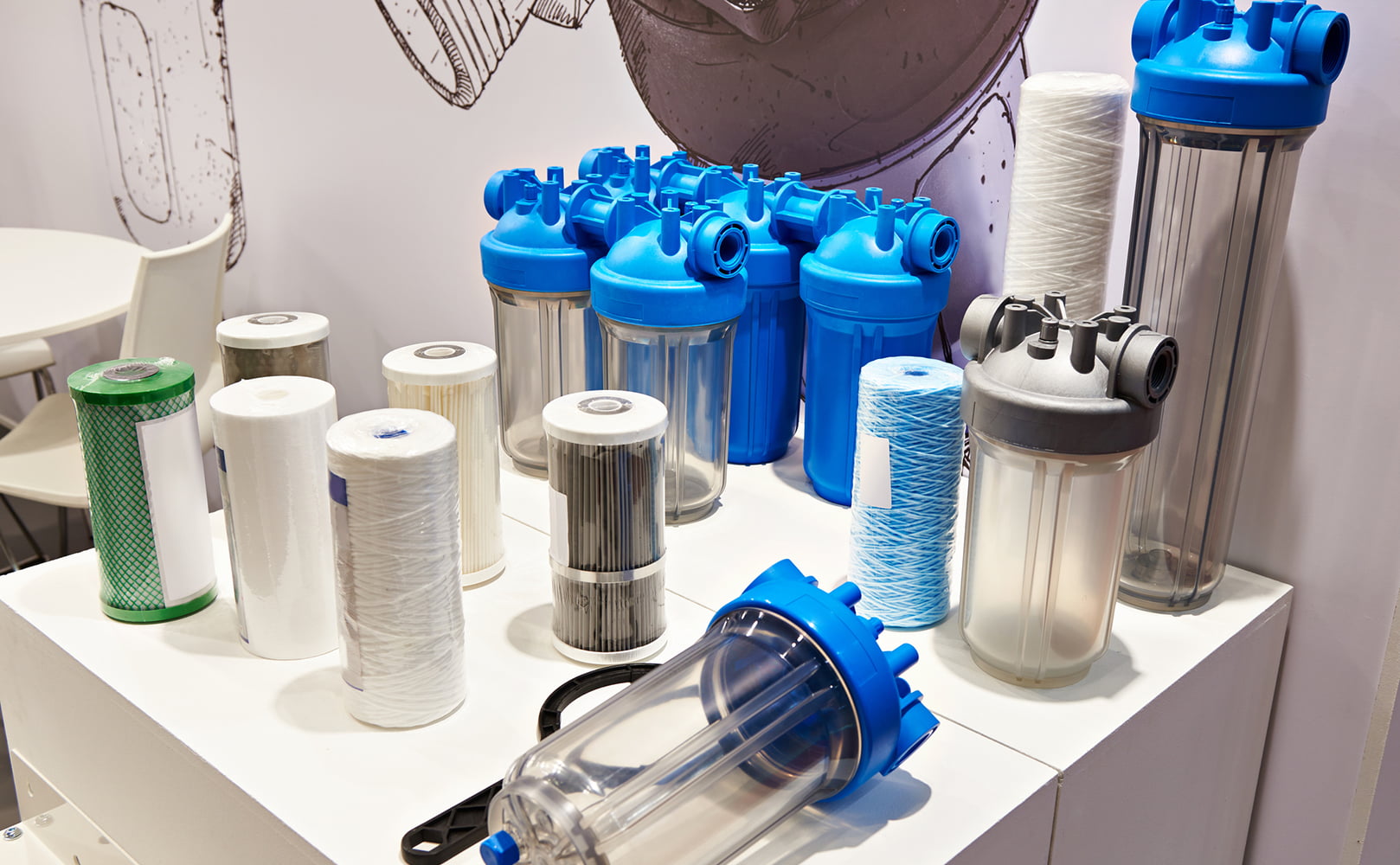Is a Pre-Filter Required for UV Systems?
Written by: Gene Fitzgerald // Last Updated: Nov 1, 2022
This page may contain affiliate links. If you buy a product or service through such a link we earn a commission at no extra cost to you. Learn more.
UV systems are one of the most effective ways to kill microorganisms in your water supply, but they are not a one-size-fits-all solution. For one, these systems need clear water to achieve peak efficiency as physical particles floating in your water can block UV light.
So, how can you fix that? By using pre-filters. Simply put, UV systems are far more effective when pre-filters are used.
That’s why this article will discuss UV pre-filters, how they work, and when you need to use one.
Key Takeaways
- UV systems might not be very effective at killing microorganisms if there are impurities in the water (like dirt, sediment, and bits of limescale) that prevent the UV radiation from reaching said microorganisms.
- In this case, a pre-filter is required to remove any impurities to ensure that your UV filter reaches maximum effectiveness.
Purpose: Why Use a Pre-Filter Before a UV Water Purifier?
A pre-filter is used in conjunction with a UV water purifier for two reasons: to remove physical particles from the water that affect the effectiveness of UV light treatment, and to prolong the life of the UV system by reducing the amount of maintenance required.
UV water purifiers work best with water that has low levels of hardness and dirt, meaning not many dissolved minerals like calcium or magnesium as well as sand etc.
By filtering out these and other elements before treating your water with UV light, you improve the effectiveness of the treatment.
Pre-Filters Protect Your UV System and Improve Its Effectiveness
UV water purifiers work by exposing microorganisms to a specific dose of ultraviolet light (the NSF recommends a minimum of 40 mJ/cm²). You need a proper dosage and duration of treatment in order for bacteria and the like to be eliminated.
Pre-filters, especially sediment pre-filters, remove components from water that may prevent the UV radiation from reaching said microorganisms. Dirt, sediment, debris, or even limescale can protect these from UV radiation by blocking the light, or even absorbing it. Only when all or most particles are removed from the water can UV filters reach their maximum effectiveness.
In addition, the particles can cause grime to build up on the quartz sleeves of UV lamps, further reducing the lamp’s effectiveness and increasing the frequency of maintenance required.
When Are UV Pre-Filters Needed?
You should have a water expert test your water for contaminants to determine whether you need to use a UV pre-filter, and which one.
In order to be effective, a UV water treatment system needs to work under these water conditions:
- Water hardness lower than 7 gpg (grains per gallon)
- Iron lower than 0.3 ppm (parts per million)
- Tannins lower than 0.1 ppm
- Manganese lower than 0.05 ppm
- Turbidity levels lower than 1 NTU (nephelometric turbidity units)
If your water doesn’t meet these requirements, you need pre-filtering.
The Types of UV Pre-Filters and How They Work
Using a sediment pre-filter, you can remove all kinds of suspended particles (debris, dirt, organic compounds, etc.) that would otherwise prevent the UV light from reaching every corner of your water. This also helps keep the quartz sleeve free from grime for longer.
That said, there are many different types of sediment pre-filters. For one, there are surface filters, depth filters, and absorptive filters. Surface filters are pleated. Depth filters are either string wound, melt blown, or spun. Absorptive filters can be both.
Without going into too much detail, different sediment filters can remove different physical contaminants at different flow rates based on their micron rating.
While sediment filters are the standard for UV pre-filtration, we also have carbon filters. They are utilized as pre-filters and standalone filters. Carbon filters are commonly used to eliminate chlorine from water and reduce the likelihood of damage resulting from high chlorine levels. A carbon filter removes pollutants through absorption.
How to Choose the Best Pre-Filtration System
Unless your UV water filter already includes a pre-filtration system, you should probably purchase one. Consider the following factors when choosing a sediment filter for your UV purifier:
- Micron rating: Filter cartridges with a micron rating of five, meaning the filter will remove sediments larger than 5 microns, are recommended.
- Filtering ability: It’s better to use polypropylene melt blown/spun or pleated sediment filters that can hold dirt. In addition to offering excellent chemical resistance and dirt retention, polypropylene melt-blown or spun cartridges are excellent for depth filtration. Pleated sediment filters have excellent dirt-holding capacity and high flow rates. Plus, many of them can be cleaned and reused.
- Effective life: Because sediment filters may need to be replaced more frequently than other filter cartridges, durability is an important factor to consider. Most sediment filters last for around three to six months.
How a UV Water Purifier Works
UV light filters water by killing germs in it. Microorganisms in water are destroyed by UV rays, which interfere with their DNA and prevent them from reproducing.
In addition, UV radiation does not cause chemical changes in water. UV-purified water, as a result, contains no more dangerous microbes and has preserved its original flavor.
In modern water purification systems, mercury vapor lamps emit a certain amount of ultraviolet light. The mercury-vapor lamp is protected by a quartz sleeve so that it does not come in contact with water.
Efficiency Factors
To maximize UV disinfection effectiveness, the following factors must be addressed:
- Suspended solids: Pathogens will be shielded from UV rays by solids floating around. Removing suspended particulates from the water is required before using a UV unit.
- Iron and manganese levels: Iron and manganese discolor the quartz sleeve around the UV bulb, reducing the transmission of UV light; they also absorb UV light. It is recommended that they be removed from water through pretreatment or reduced to less than 0.3 ppm for iron and 0.05 ppm for manganese.
- Water hardness: In hard water, scale builds up on the quartz sleeve surrounding the UV bulb, preventing the light from passing through. Water softeners should be used before UV units if the water is hard.
- Organic substances: UV light’s germicidal effects can be diminished by organic dissolved substances that should be removed before using a UV purifier.
When to Use a UV Water Purifier?
You should use UV purification when your water contains dangerous bacteria or other living organisms. UV purification may also come in handy when your water supply is affected due to unforeseen events, such as natural disasters.
By the time your city’s water plant issues a Boil Water Advisory, the water has already been contaminated. UV systems protect water from harmful viruses and other germs when the water source is contaminated.
UV filters are particularly important for people that have their own private wells. Ultraviolet treatment is the most effective method for eradicating microorganisms from the water, which is the well owner’s responsibility.
Are They Safe?
It is completely safe to treat water with UV light. UV systems don’t use dangerous chemicals or alter the water’s composition. They disinfect it using UV-C light, which kills waterborne pathogens but doesn’t affect humans so long as you don’t touch or look at the lamp while it’s on.
While chlorine treatment is another alternative, ultraviolet treatment is the safer option. That’s because UV-C light even kills protozoa which chlorine does not affect. Plus, UV light is safer and far easier to maintain than chemical disinfectants. Lastly, water treatment with chlorine requires a retention tank and precise injections and solutions.
What’s more, today, UV water purification is used at most wastewater treatment plants to remove the toxic chemical byproducts of chlorine or chloramine treatment.
UV Water Purifiers vs. Water Filters
Microorganisms can be removed from water by reverse osmosis, ultrafiltration, carbon filtration, and ceramic filtration – think physical size exclusion (through microscopic pores in a filter or membrane).
A UV water purifier works completely different as explained above. No contaminants will be removed.
Furthermore, UV systems are more effective at removing bacteria and viruses than water filters. A lot of the time UV disinfection is used in conjunction with water filtration devices to create cleaner water.
What Other Types of Filtration Methods Require Pre-Filters?
UV filters aren’t the only type that should be paired with pre-filtration. Two other filtering methods that use pre-filters include:
- Reverse osmosis systems: You might think that since reverse osmosis can remove practically every kind of contaminant from water, a pre-filter wouldn’t be necessary. However, a pre-filter, such as a carbon filter, extends the life of the RO membrane by removing chlorine and larger particles before they reach it. Since the RO membrane is concerned primarily with the smallest impurities, its pores will not clog as quickly.
- Water softeners: Many water softeners use a carbon pre-filter to eliminate chlorine before the water is softened, as chlorine is especially destructive to resin beds. Plus, several water softeners have a sediment pre-filter to protect the system from suspended particles.
If you have any thoughts about the question, is a pre-filter required for UV, please don’t hesitate to leave a comment below!
Information provided on BOS is for educational purposes only. The products and services we review may not be right for your individual circumstances.
We adhere to strict editorial guidelines. Rest assured, the opinions expressed have not been provided, reviewed, or otherwise endorsed by our partners – they are unbiased, independent, and the author’s alone. Our licensed experts fact-check all content for accuracy. It is accurate as of the date posted and to the best of our knowledge.



